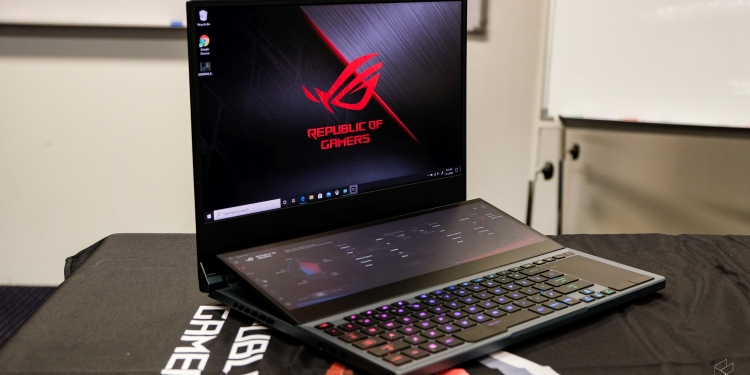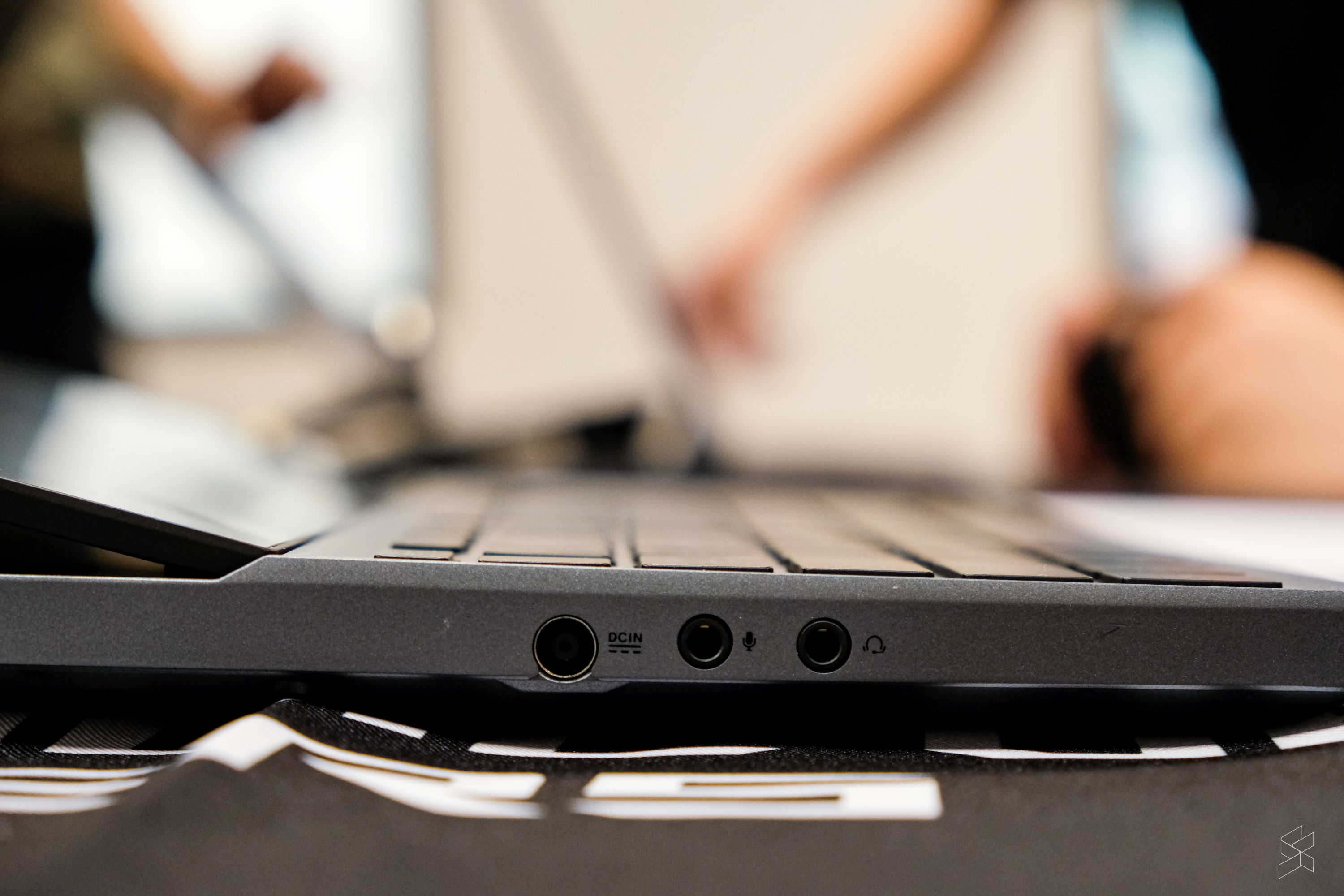I still remember the first time I saw the Asus ZenBook Pro Duo. It was awesome, and a truly interesting way to give users who needed more screen real estate on a laptop, a second screen. During my time with it, the second display definitely felt like it had a lot of potential which is always exciting when you see new ideas.
But, naturally with it being such a novel idea, there were a couple of problems, though it was good enough that I was looking forward to a version two. And that, is what I’ll be talking about today, but it’s no longer called a ZenBook. Instead, ASUS has moved the idea over to their high-end Republic of Gamers (ROG) brand so this new version is called the ROG Zephyrus Duo 15—which I got to spend a hot minute with.
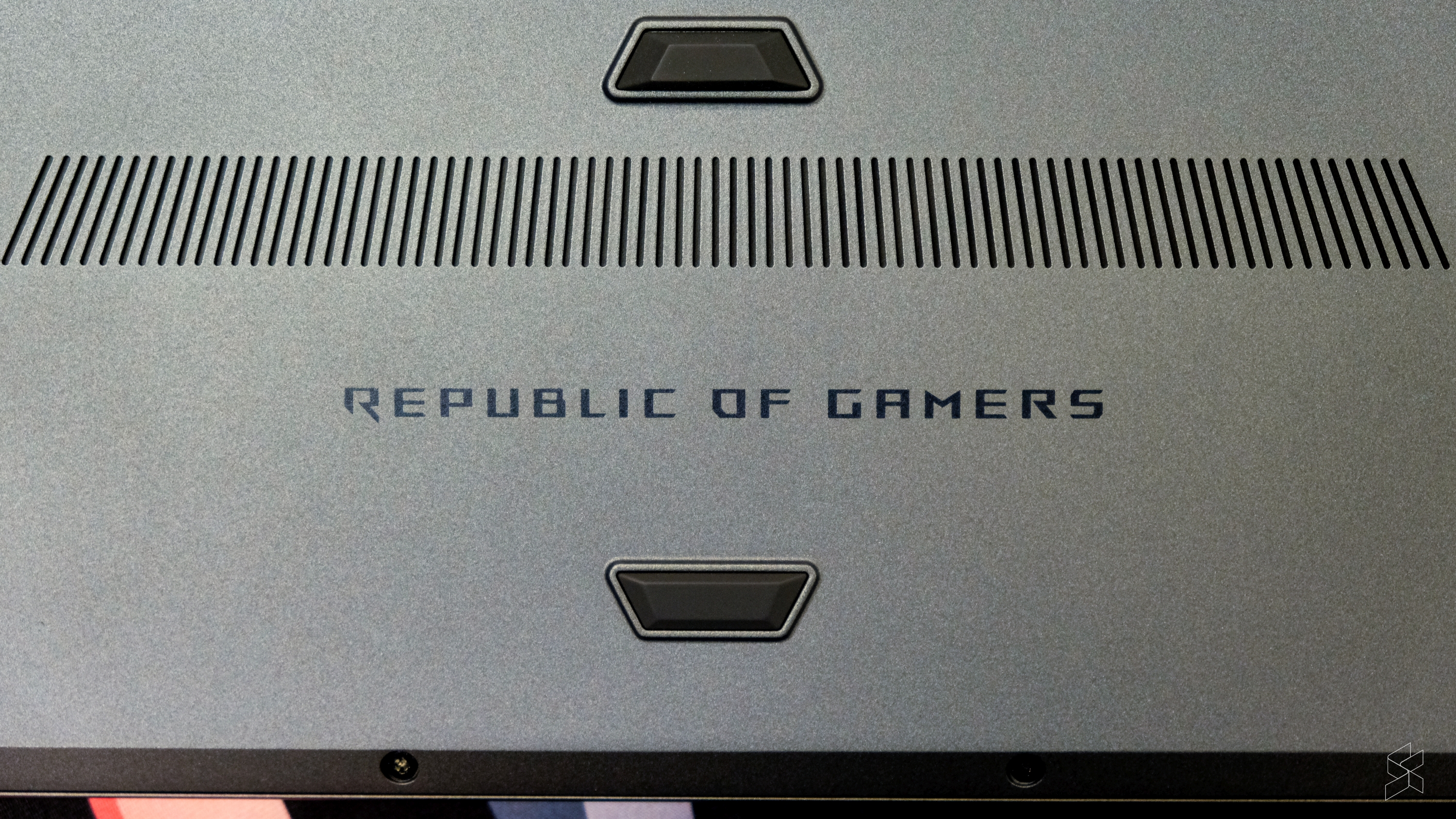
Before the whole Movement Control Order, Asus invited me out to check out the Zephyrus Duo 15 in a small closed door event. I wasn’t sure what to expect, but I have to say that I was pretty happy with some of the tweaks they’ve made to the form-factor. Now that the NDA has lifted, here are some of my thoughts.
Obviously, being a high-end ROG Zephyrus laptop, this device is packed to the gills with performance. You can get it with up to an 8-core 10th generation Intel Core i9 processor with Hyper-Threading, up to 48GB of DDR4 3200MHz RAM and up to 2TB of NVMe PCIe SSD storage. It’s also got up to an NVIDIA GeForce RTX 2080 SUPER graphics card, which is sweet.
All about that screen
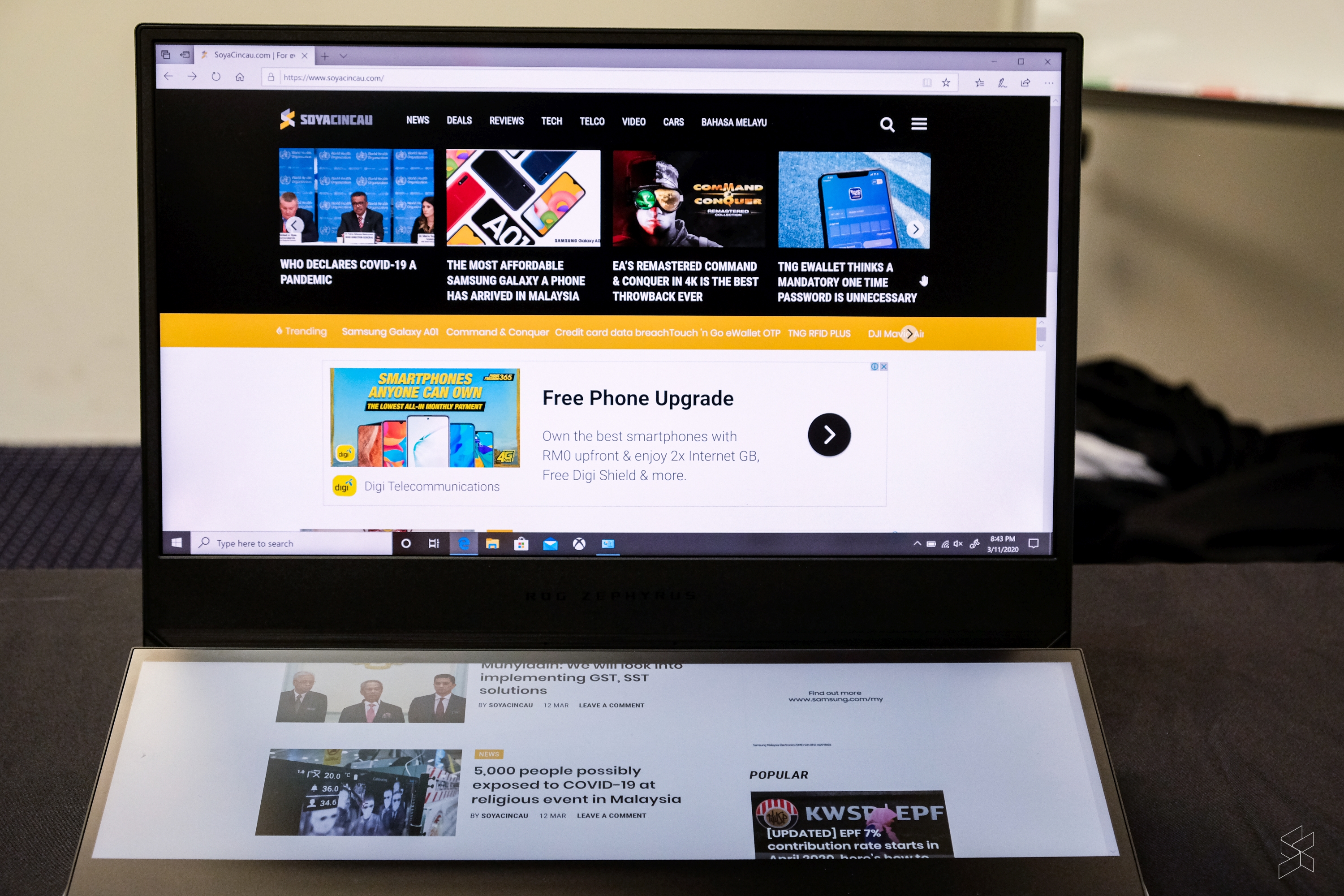
But, performance aside, what I was perhaps more interested in was the form-factor and what Asus was doing to take their dual-screen shenanigans to the next level. Well, the answer was to quite literally elevate the entire experience. Yes, the new ROG ScreenPad Plus can now lift up off the chassis at a 13-degree angle, and give you a much more comfortable viewing experience.
The screen, as far as I can tell is pretty much identical to what the old ScreenPad Plus offered. It’s a 14.1″ screen with vertical pixels that will match whatever resolution you decide to opt into for your main display. If you opt for the crazy fast 300Hz high-refresh rate (3ms response time) Full HD panel up top, you’ll get the Full HD ScreenPad Plus at the bottom. Alternatively, there’s a 4K UHD panel with 100% Adobe RGB coverage for those who prefer resolution, and with that you’ll also get a matching 4K ScreenPad Plus.
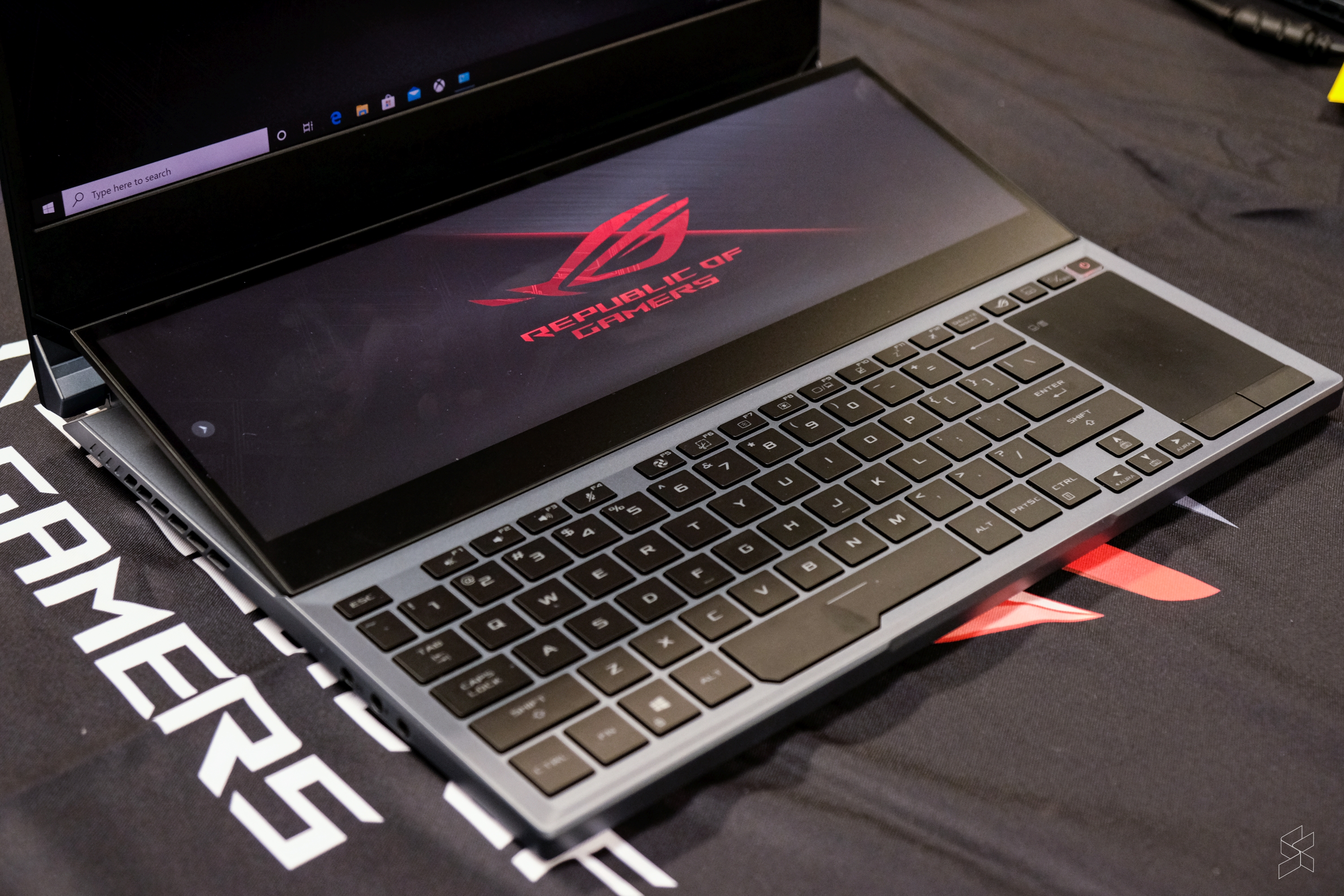
It is, however, worth noting that the ScreenPad Plus will always be at 60Hz regardless of the panel, which is fine because you’re not going to be gaming on that screen after all. The ScreenPad Plus will also be the only touchscreen panel on the laptops, which is a little bit of a bummer but I don’t think it’s really a dealbreaker.
One thing that did concern me about the new flip up was structural rigidity when using that secondary screen. The panel was really thin, and it being a touch panel, it seemed really vulnerable to damage. But, I will say that after prodding it really hard and trying to get it to flex, I was very impressed with how sturdy the display was. It held pretty much solid through every reasonable interaction I had with it using my fingers, which is great. In fact, it felt even sturdier than the main display, which flexes quite a lot because it’s so slim. So, good job on the structural rigidity there, Asus.
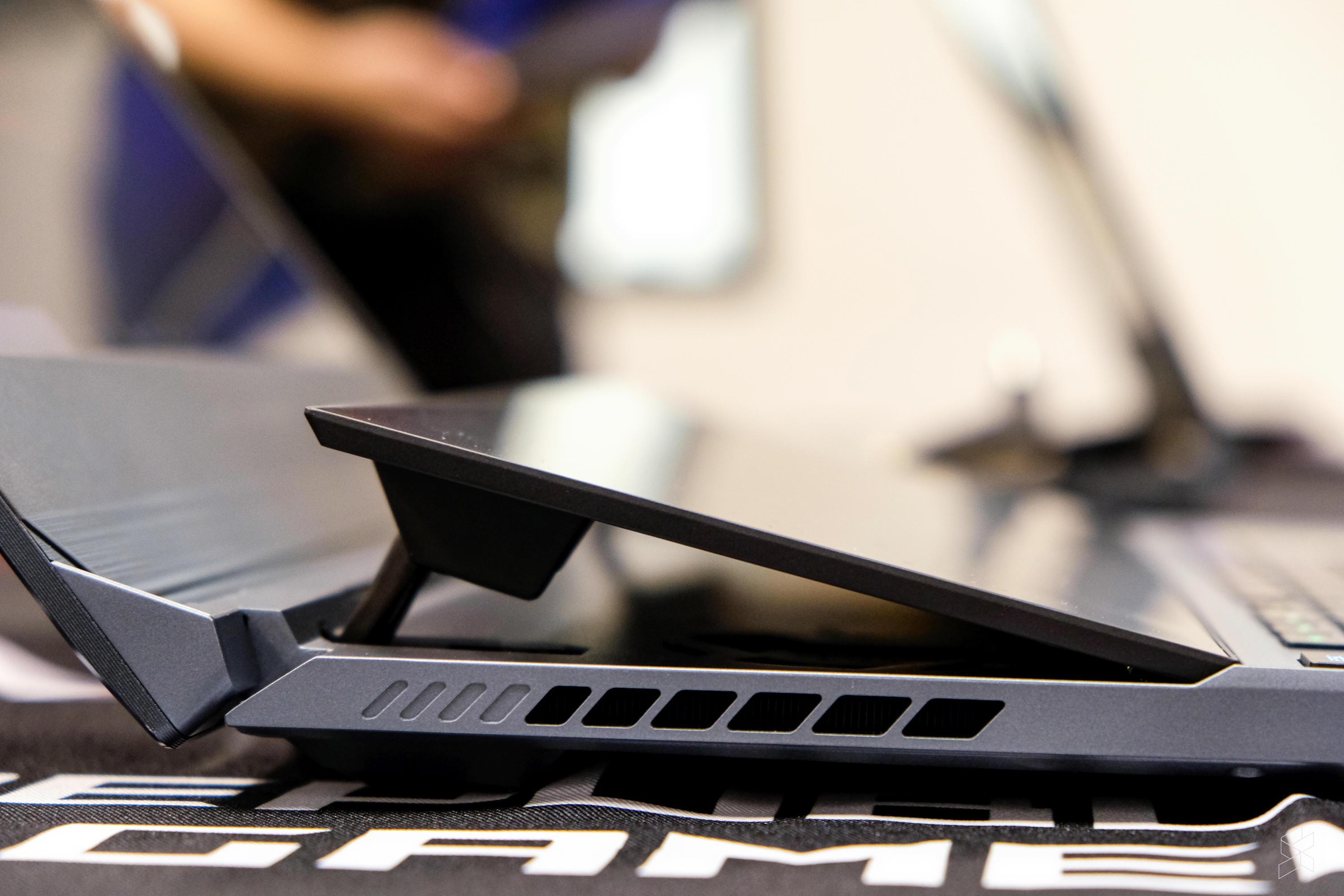
Now, the Zephyrus name probably gained its reputation for bringing one of the most unique laptop form-factors during the rise of the Max-Q laptop era. Unlike every other manufacturer that I saw at the time, the Zephyrus was the only laptop that would lift its chassis off the bottom panel like the cargo doors of a plane, to give the laptop more room to breathe.
It looked super science fiction, and from what I could tell, it definitely worked at keeping the laptop cool while maintaining one of the thinnest form-factors in the market. That said, there were always concerns of the panel having a little too much give, as well as dust being a problem. With the new Zephyrus Duo 15, you don’t get that version of the Active Aerodynamic System (AAS) because Asus has incorporated that part of the cooling mechanism into the new ScreenPad Plus.
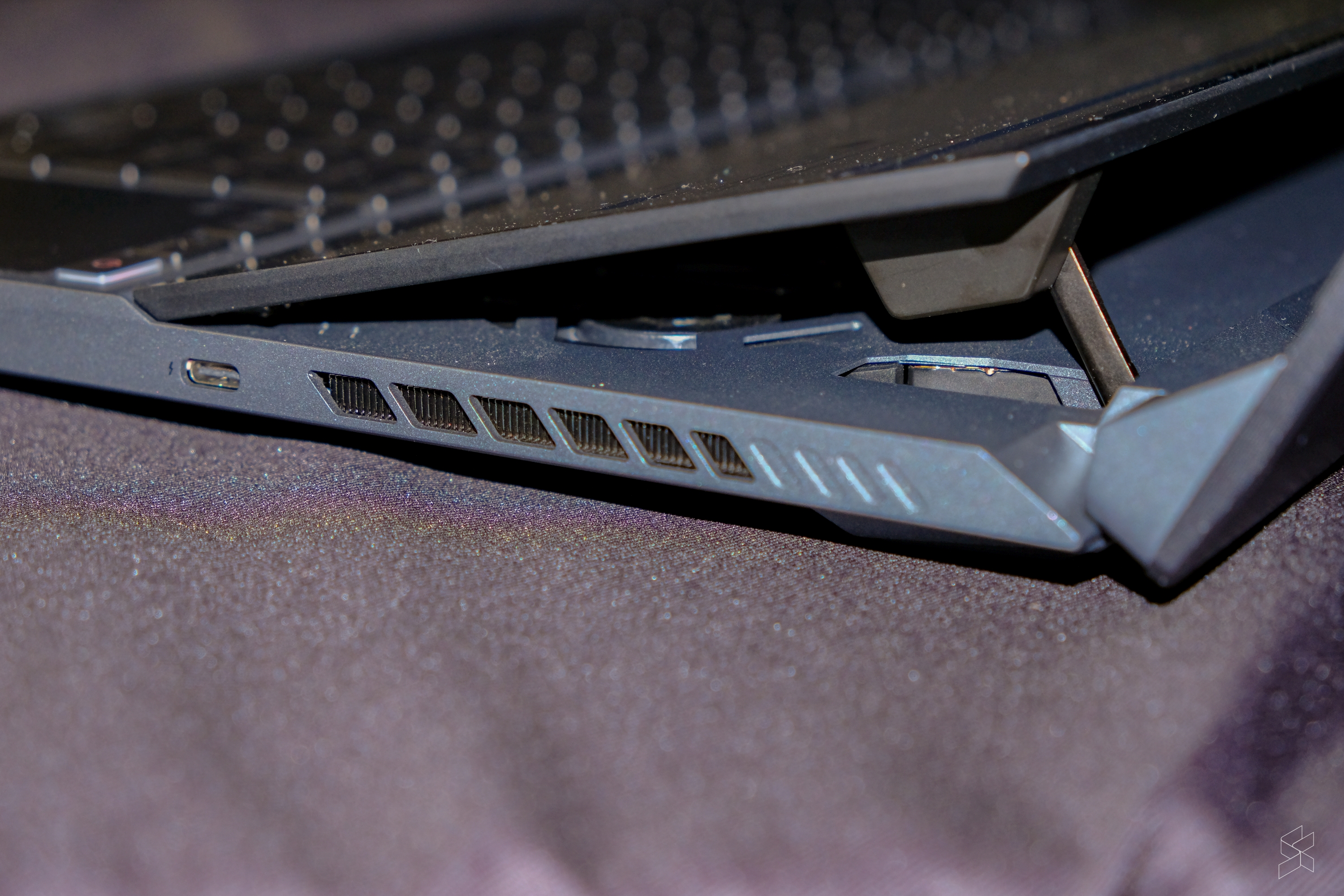
Yup, when the screen lifts off, it also opens up a huge space for the laptop to pull cool air from the top half of the device, in to cool the components, In fact, if you look closely at the pre-production unit that I got to try out here, you’ll see the fans sitting just under the ScreenPad Plus. You can even stick your finger in and mess around with them if that’s what you want to do, for whatever reason.
I don’t know if you’ll still be able to do that in the retail variant, but the point is that Asus says you’re getting 30% more airflow that the previous AAS solution which is a lot. On top of that, it can cool better and more quiet thanks to a whole bunch of improvements to the fans and even the use of liquid metal as the thermal compound for the CPU.
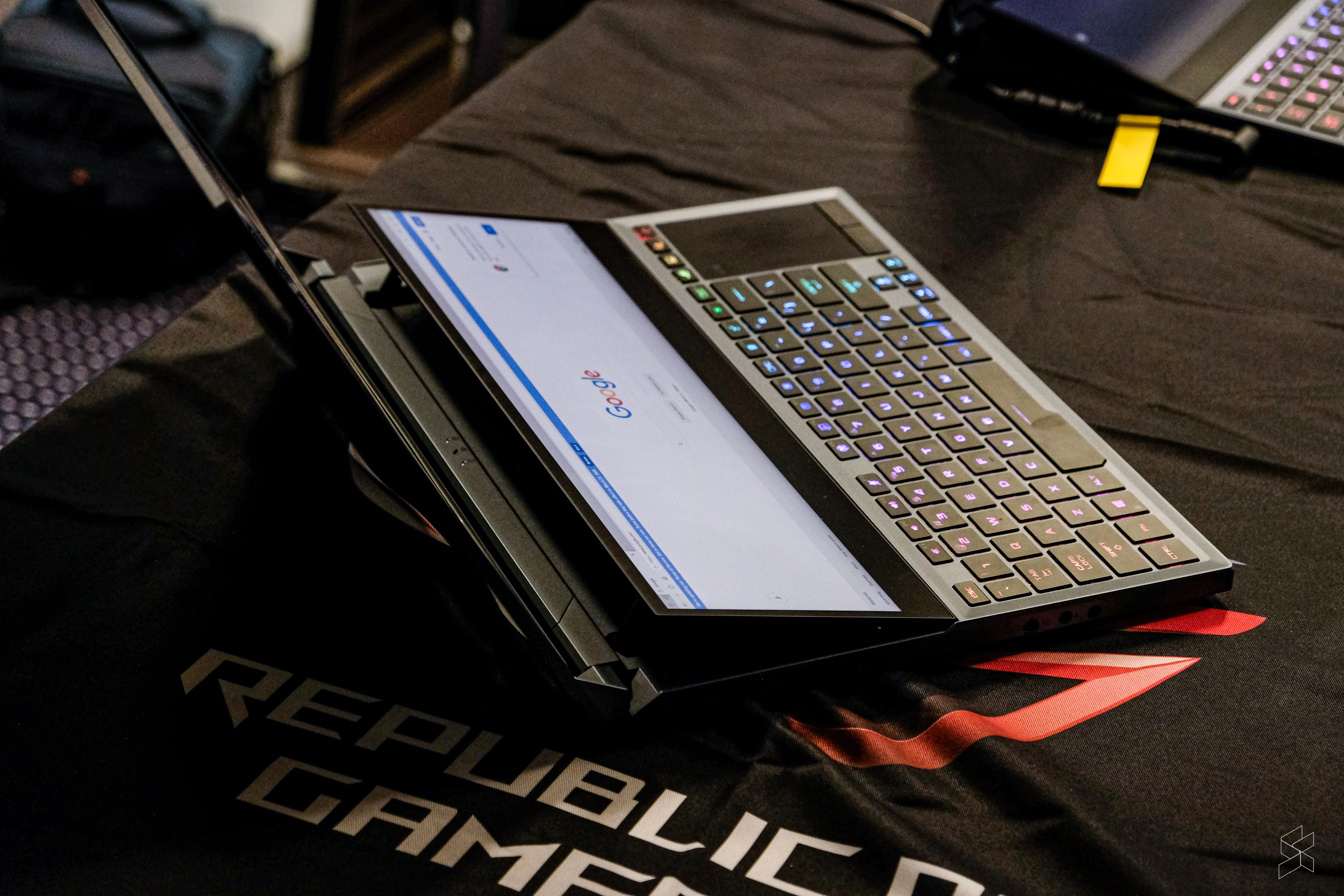
Liquid metal is a big deal when it comes to heat dissipation, but from what I can understand it comes with its own set of risks due to the conductive nature of the metal, as well as its tendency to leak. Leaky conductive fluid = short circuiting which is not good for a laptop. So, I’m very impressed Asus actually commissioned custom equipment to be able to implement this in their mass-produced laptops. They’ve even devised a new fence design to prevent the liquid from leaking out, which is crucial.
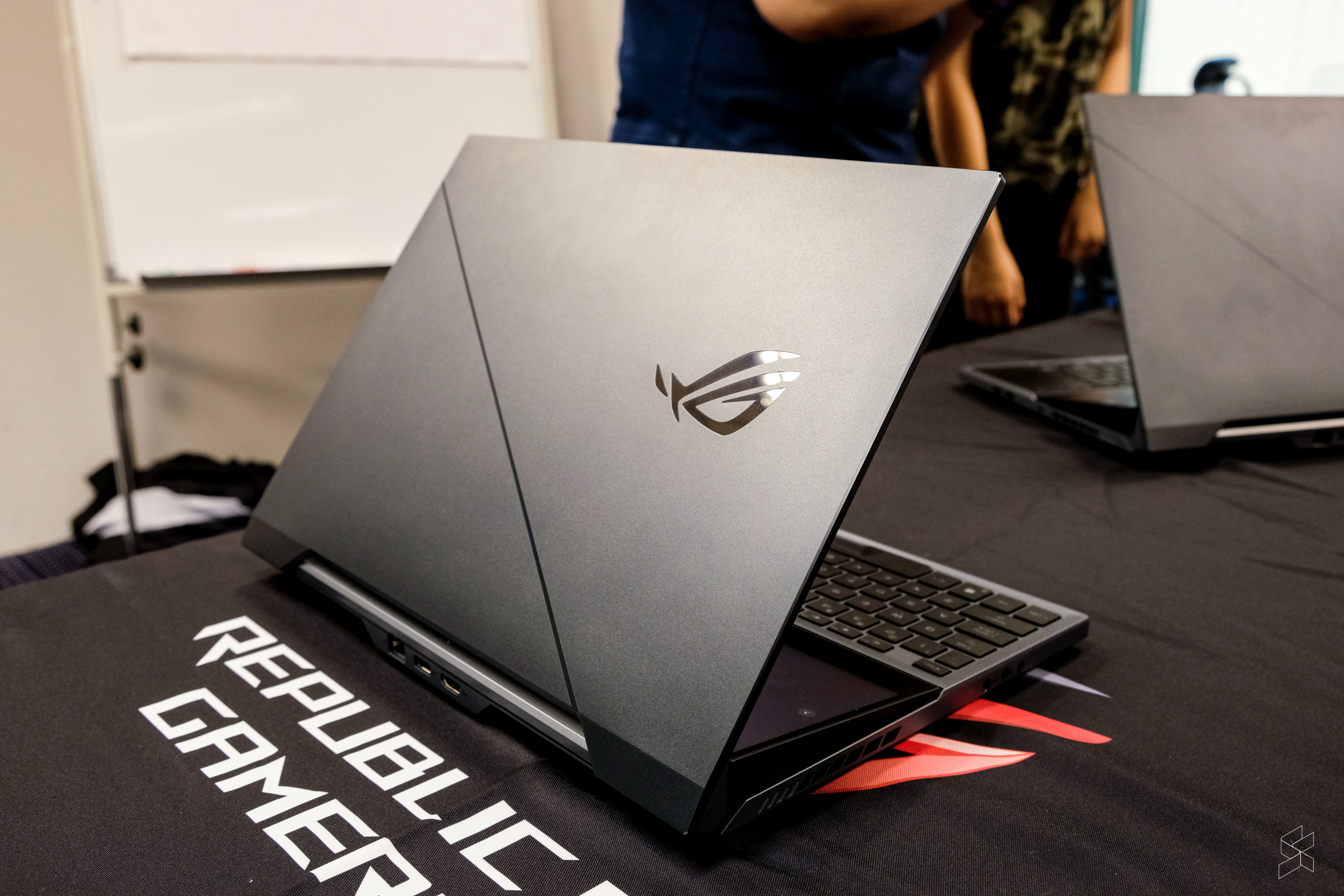
So far, I’m liking a lot about the ROG Zephyrus Duo 15. It’s got the same kind of potential the ZenBook Pro Duo had with the endless flexibility of the second screen for content creators, streamers and multitaskers whether you’re a gamer or not. And on top of that, Asus has addressed quite a few of the previous version’s nagging issues. The only downside is that there are a couple of issues that Asus hasn’t solved that I’m not a super big fan of.
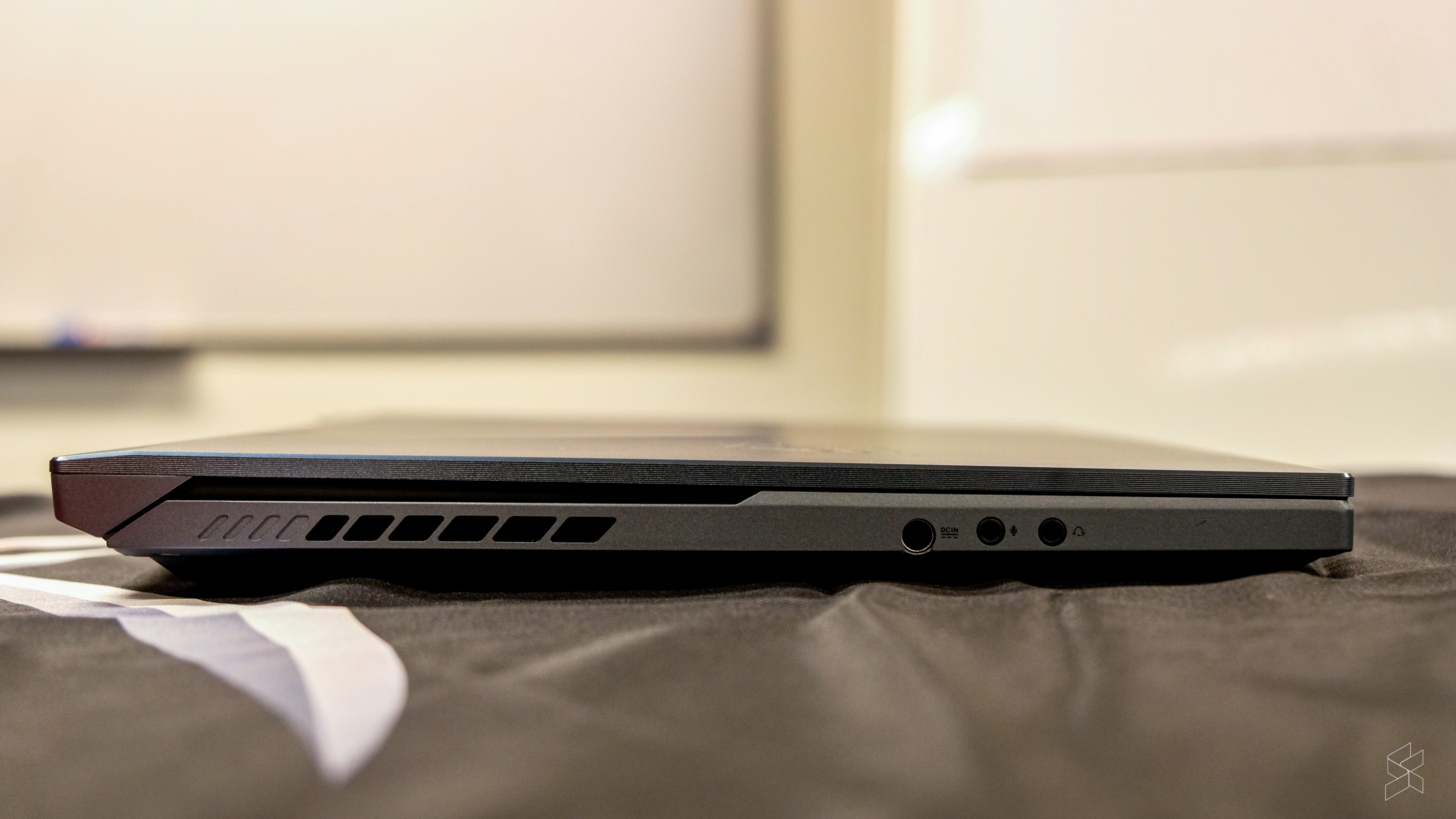
For starters, it’s still quite the chunky laptop. It weighs 2.4kg and is 20.9mm thick, which is a far cry from the first Zephyrus and it’s 16.9mm thick chassis that weighed 200g less. I suppose a lot of that is unavoidable due to the power and design of the laptop, and it’s still a lot more portable than the near 5kg gaming laptops of old, but I really would like to see Asus push the envelope here with even more lightness and thinness. That would be incredible.
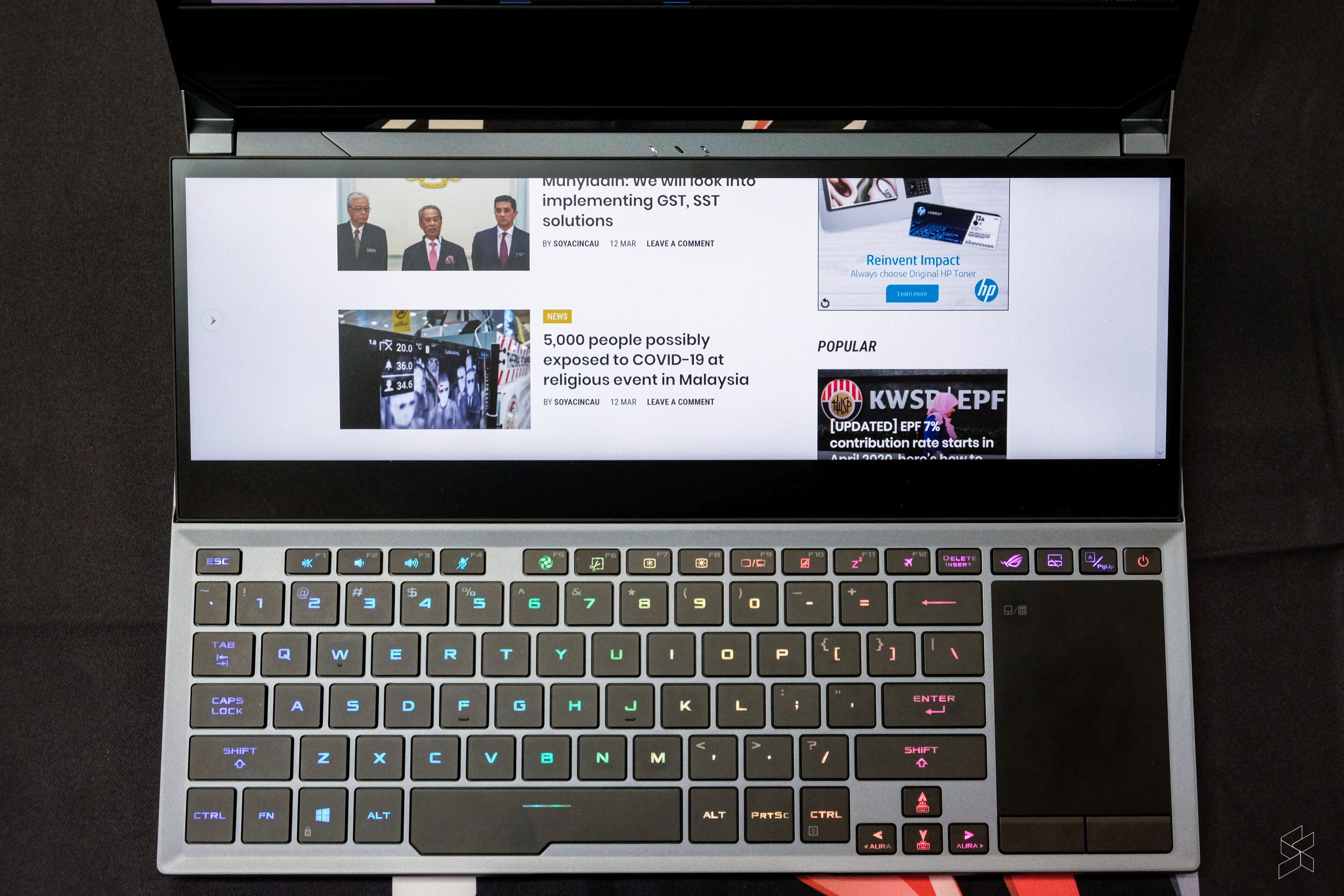
Besides that, the keyboard and trackpad is also in my least favourite position. The keyboard is really close to the edge, with no space for your wrist to rest so the fall off from the keys is quite big. I think Acer had the better idea there with their new Predator Helios 700 and its sliding keyboard mechanism. Not only were they able to keep the trackpad at the bottom unlike the ROG Zephyrus Duo 15, but it could also slide down to form a pseudo wrist rest which was sweet.
But, I will say that I don’t know how the mechanics of that would work with a laptop like this that has two screens. And, the chiclet keys for the keyboard felt plenty good to type on so its a relatively minor complaint from where I’m standing.
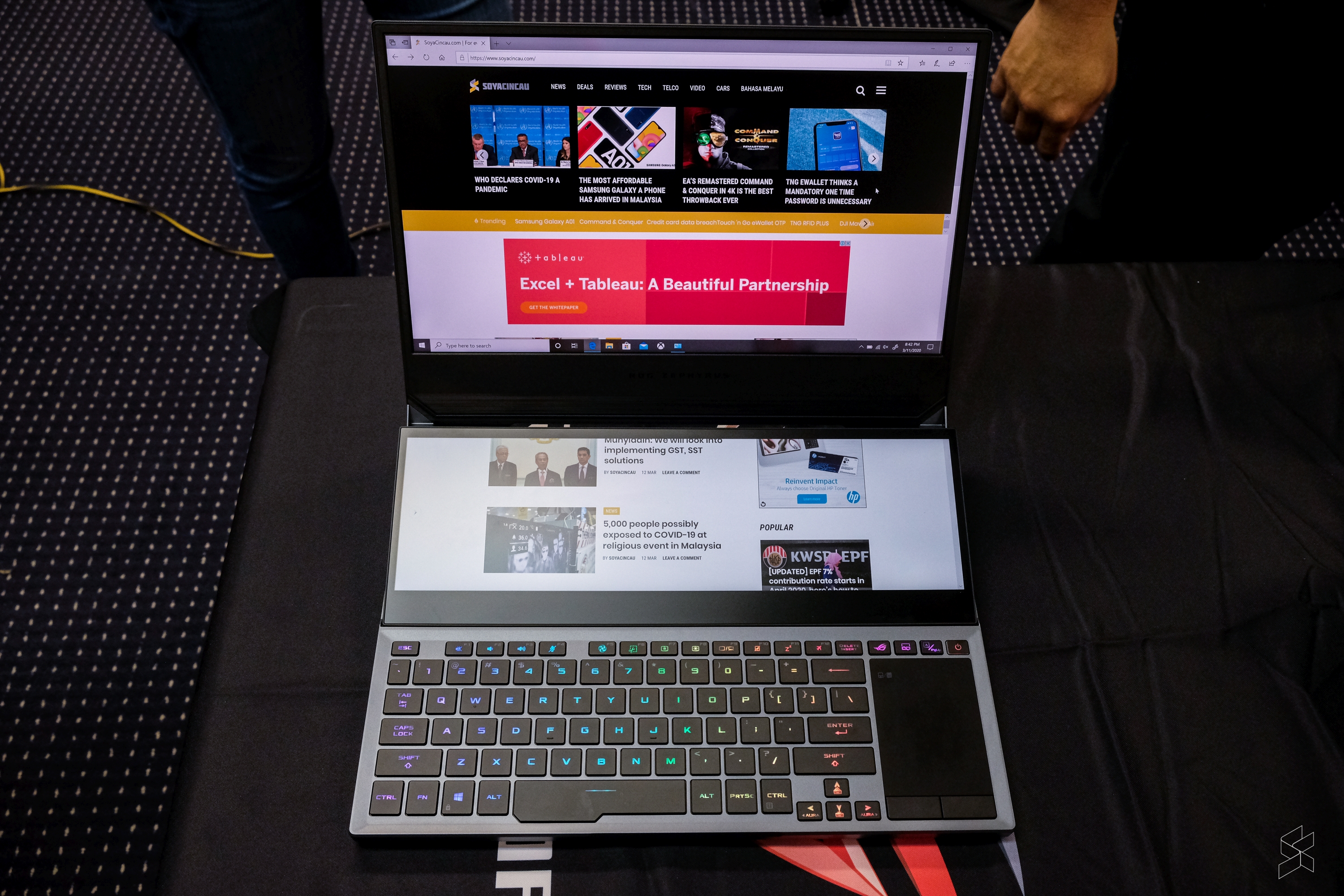
As a whole, I’m definitely a big fan of the laptop so far. It has a lot of power, a lot of flexibility, a couple of improvements and a clean look. On top of that, you’ve got a reasonable set of I/O ports including a Thunderbolt 3 port (with PD), a DisplayPort 1.4, an HDMI 2.0b port, three USB-A ports as well as a Gigabibt Ethernet port (it also supports WiFi 6). The DC in port is in a bit of a weird position, however.
That said, take these thoughts with a grain of salt because I got to spend maybe 5-10 minutes tops using the pre-production unit.
Can’t wait for a review device though! In the meantime, let me know what you think of the ROG Zephyrus Duo 15. Is this the right direction for the future of gaming laptops? I’d love to hear your thoughts in the comments below.
Photography by Rory Lee with the Fujifilm X-T20.

